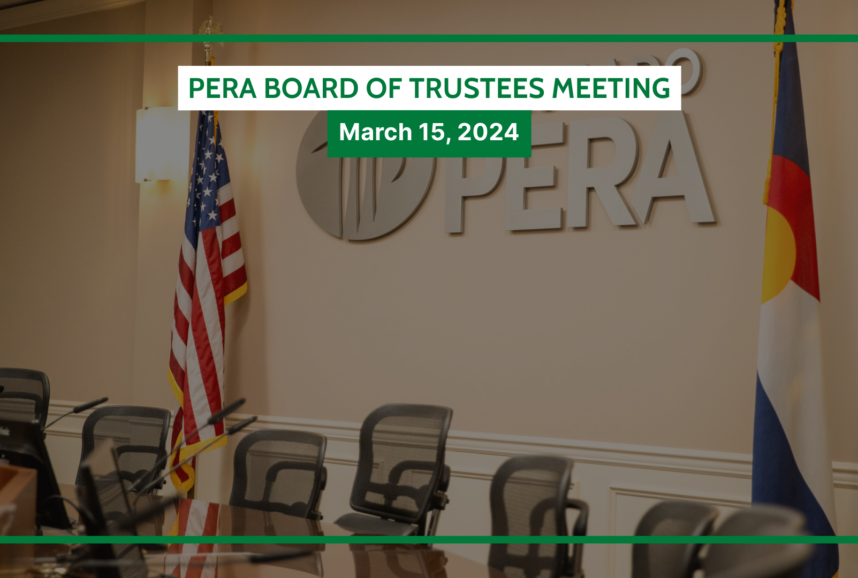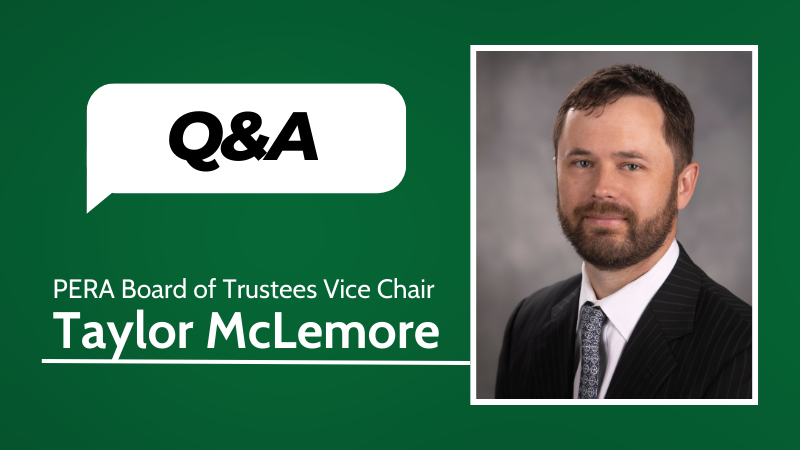There has been considerable commentary on the sustainability of Colorado PERA. Using a simple definition, PERA is sustainable. In this instance, meaning able to pay future retirements without depleting the trust funds.
But digging a little deeper, there are additional criteria pension plans should meet to be considered sustainable:
- A sustainable pension plan has a reasonable benefit design. According to a recent study completed by Gabriel, Roeder, Smith & Company, PERA’s hybrid defined benefit plan design delivers a higher percentage of income in retirement than other plan designs – and does so at a lower cost.
- A sustainable pension plan has a commitment from the plan sponsor (public employers, in PERA’s case) to regularly fund the plan. The Colorado General Assembly and the Governor, through the passage and enactment of 2010’s Senate Bill 1, have ensured that the contributions received by PERA’s employers will achieve this goal when the contribution increases contained in SB 1 are fully recognized in 2017 and 2018.
- A sustainable pension plan has a strong governance process. PERA is overseen by a 16-member Board of Trustees consisting of three Trustees appointed by the Governor and confirmed by the Senate; four members from the School Division; three members from the State Division; one member from the Local Government Division; one Judicial Division member; two PERA retirees; a non-voting representative from the DPS Division; and the State Treasurer as an ex officio, voting member. All Trustees are fiduciaries bound by law to act solely in the best interest of the PERA membership.
By these additional measures, Colorado PERA is, in fact, sustainable.
But what about the retirement system’s unfunded actuarial accrued liability (UAAL)? Doesn’t that prove that PERA is unsustainable?
In a word, no.
Having an unfunded liability does not mean that a pension plan is unable to pay the benefits for which it is presently obligated or to meet current cash flow requirements. Because of the long-term nature of pensions, funding gaps can be filled gradually, over time. Most of the current unfunded liability is a result of the market decline in 2008 and a reduction of the investment rate-of-return assumption. Think of the unfunded liability as a hole which needs to be filled. Unsustainable plans are those with a deficit which are either failing to fill in the hole, or continuing to dig it deeper. PERA is not one of those plans.
One final thing to keep in mind is that sustainability isn’t measured in weeks, months, or single years. Measuring the sustainability of a hybrid defined-benefit pension plan such as PERA must reflect the nature of the liabilities which are long-term. Pension plans operate on a long time horizon where members work 10, 20, 30, even 40 years, and draw a pension for many years after retirement.
If you only focus on a few points in time or take raw data out of context to assess sustainability, you’re likely to see a distorted picture. Like with a 30-year mortgage, PERA is paying down the unfunded liability over time. Just as with a mortgage, it takes many years to see a significant reduction in the principal owed, it will take time for the unfunded liability to show large declines. There is no basis for surprise or concern that the outstanding balance does not decline materially for many years.
PERA is sustainable.
This article is based on a New Hampshire Retirement System publication. We thank them for their willingness to share information with PERA.
Trust fundA fund in which money and/or other assets are held and managed by trustees on behalf of plan participants. PERA maintains trust funds for each of its Defined Benefit Plan divisions (State, Local Government, School, Denver Public Schools, and Judicial).Hybrid defined benefitPERA’s Defined Benefit (DB) Plan is “hybrid” in that it combines features of a traditional DB plan with some of the features of defined contribution (DC) plans, such as portability.Unfunded liabilityThe difference between the projected amount of money needed to pay benefits earned to date and the amount of money currently available to pay those benefits.Defined benefitAlso known as a pension, this is a type of pooled retirement plan in which the plan promises to pay a lifetime benefit to the employee at retirement. The plan manages investments on behalf of members, and the retirement benefit is based on factors such as age at retirement, years of employment and salary history.




